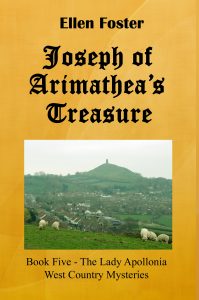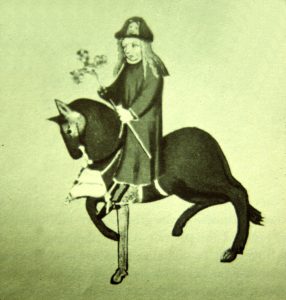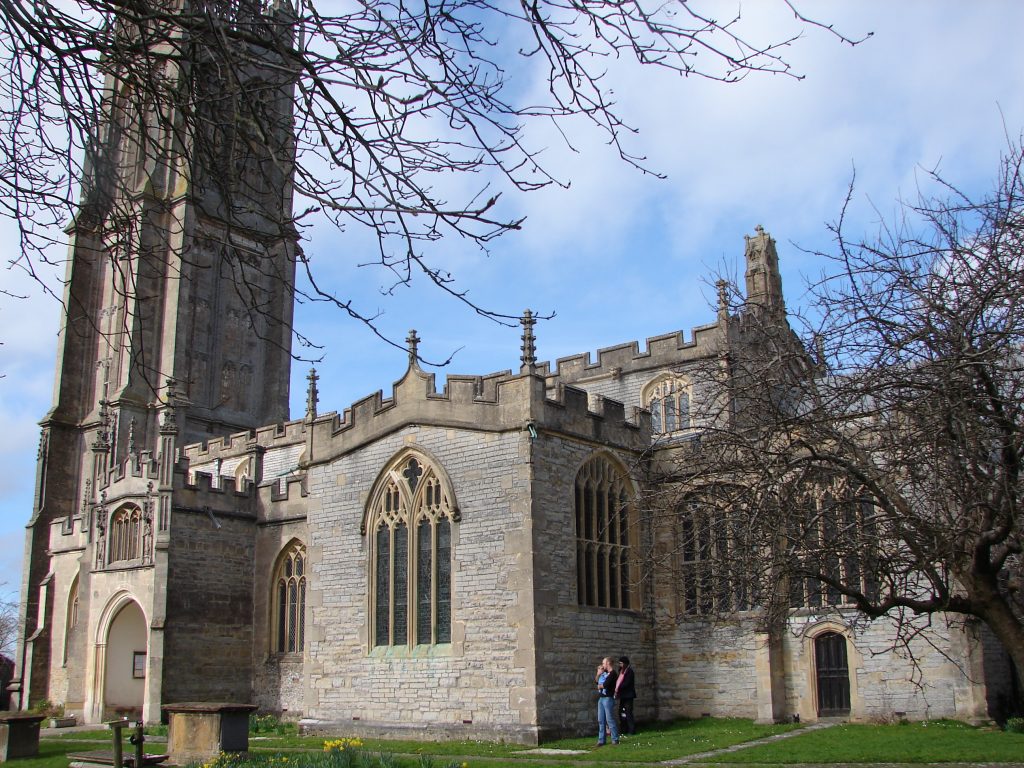 This posting will wrap-up my discussion of medieval topics in Joseph of Arimathea’s Treasure, the fifth book in my Lady Apollonia West Country Mystery Series, as shown on the left. Today I begin with the pardoner, a character who has appeared in all my novels. Brandon Landow, the name of my character, was inspired by Chaucer’s Pardoner, a person licensed by the church to sell indulgences or pardons to sinners who feared for their souls after death.
This posting will wrap-up my discussion of medieval topics in Joseph of Arimathea’s Treasure, the fifth book in my Lady Apollonia West Country Mystery Series, as shown on the left. Today I begin with the pardoner, a character who has appeared in all my novels. Brandon Landow, the name of my character, was inspired by Chaucer’s Pardoner, a person licensed by the church to sell indulgences or pardons to sinners who feared for their souls after death.
Pardoners traveled about the medieval countryside selling pardons, paper documents with signatures of bishops which entitled the bearers to have forgiveness for their sins. They also sold indulgences, grants by the Pope of remission of the temporal punishment in purgatory still due for sins after absolution. Finally, they frequently sold supposedly holy relics which were often fakes. My pardoner, Brandon Landow, was involved in all these practices throughout my books.
There was a medieval concept in the Roman Catholic Church of a Treasury of Merit controlled by the church. This was the concept that Jesus Christ and the Christian Saints, through their extreme goodness, had built up a supply of merit before God which could never be exhausted. From this unlimited supply of merit, the church could then grant pardons and indulgences for a price, and this concept was abused to allow the church to make money. Pardoners were part of that abuse, and Chaucer created his character based on those abuses.
Brandon Landow exhibits many of the characteristics of Chaucer’s Pardoner, a drawing of whom from the Ellesmere Manuscript is shown on the right. These characteristics include being untrustworthy and duplicitous in his supposedly holy dealings. He was considered a cleric who was subject to the jurisdiction of canon law but, at the same time personally motivated by avarice. He became very rich from his deceitful profession. In addition, his appearance had characteristics associated with shiftiness and gender ambiguity.
Brandon, as a boy, had served in Lady Apollonia’s household, so my heroine knew the Pardoner’s deceitful, untrustworthy character which leads to her suspicion of him whenever he appears in my stories. You will enjoy seeing how the tension between Brandon Landow and Lady Apollonia plays out if you read Joseph of Arimathea’s Treasure.
Another medieval character of whom I want to comment is that of an anchorite. These were medieval religious recluses who, in England, were often attached to a parish church. An anchorite took a vow of stability of place for his or her lifetime. There was an anchorite in Memento Mori based on a hermit who had a cell attached to the Chapel of Saint Kyneburgh. I have again included an anchorite character, named Brother Johanus, in this story. His cell was attached to the south transept of the parish church, St. John the Baptist, which is located on the High Street in the heart of Glastonbury. The cell would have protruded from the transept of that church, a modern picture of which is shown below.
Brother Johanus lived in his small cell from which he could open a window when summoned and counsel anyone in the community who felt a need to consult him. In my story, Johanus was known to be very devout and compassionate in Glastonbury and many people, including an important member of Lady Apollonia’s household, sought his advice
Please join us again next time when we will begin examining medieval topics which arise in my sixth novel, King Richard’s Sword.
